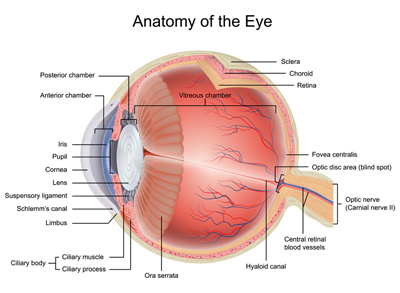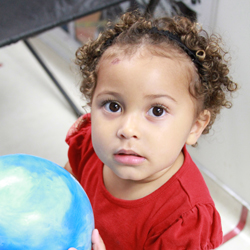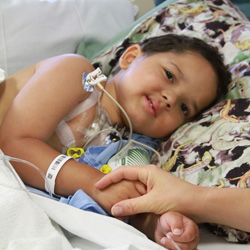About Eye Cancer
 Retinoblastoma is a rare eye cancer affecting about 250 children each year. The disease occurs most often in children under the age of 4 years, with 80% of cases occurring under age 3 years and virtually none above age 6 years. Most children (99%) with this disease will be cured.
Retinoblastoma is a rare eye cancer affecting about 250 children each year. The disease occurs most often in children under the age of 4 years, with 80% of cases occurring under age 3 years and virtually none above age 6 years. Most children (99%) with this disease will be cured.
Childhood retinoblastoma originates in a part of the eye called the retina. The retina is a thin layer of nerve tissue that coats the back of the eye and allows a person to see. Retinoblasts (immature cells of the retina) multiply during gestation and early life to make enough cells to create the retina. Retinoblastoma is a cancer that affects these retinoblasts, causing them to multiply too much, and not to mature fully (a process called differentiation). In children, this can occur in one eye (unilateral) or both eyes (bilateral).
Signs and Symptoms of Retinoblastoma
Doctors can identify retinoblastoma on a routine well-baby or well-child exam. Parents also notice symptoms such as:
- A pupil that looks white or black instead of red when light hits it
- A crossed eye (looking either toward the nose or toward the ear)
- Poor vision
- A red, painful eye
- An enlarged pupil
More Information
Join our mailing list
Stay up to date on the latest news, research breakthroughs and stories of hope.



